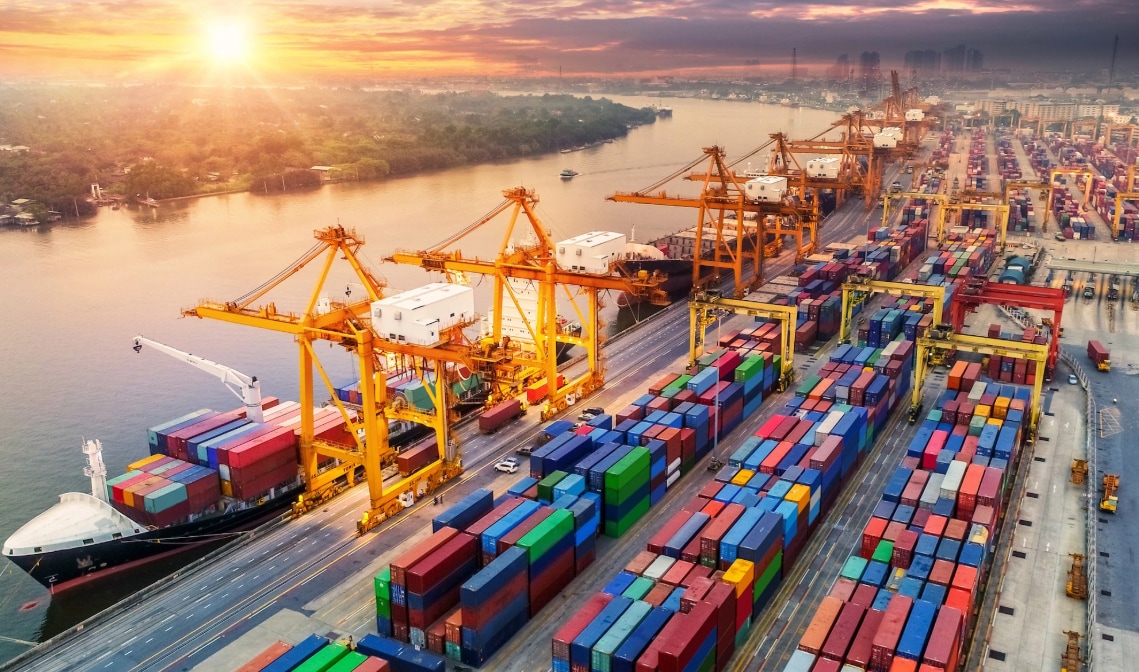7 ways packaging is changing to reduce plastic waste

Plastic pollution remains one of the world's biggest challenges.
Image: REUTERS/Heo Ran
Stay up to date:
Plastic Pollution
- Packaging generates the most plastic waste of any sector.
- Brands are investing in new ways to package their products.
- Alternatives to plastic include laser-etching vegetables and engineered cardboard.
- There’s also a growing emphasis on how containers can be reused and recycled.
Anyone who has seen a child tear open their presents on Christmas morning knows how little attention gets paid to the wrapping – it’s all about what’s inside.
Yet packaging is responsible for an extraordinarily high proportion of waste, which all too often ends up in the wrong place. As this chart shows, packaging generates more plastic waste than the next four biggest industrial sectors combined.

Driven in part by pressure from increasingly environmentally-conscious consumers, many companies are changing the way their products are packaged to be more sustainable. The Ellen MacArthur Foundation advocates strategies at the heart of a circular economy – elimination, reuse and material circulation.
Here are seven ways packaging is changing.
1. Direct elimination
The simplest way to prevent packaging waste is to consider whether the packaging is needed at all. Supermarkets like Tesco and ASDA in the UK, have been phasing out the use of unnecessary plastic films for products such as multi-buy tins, yoghurt pots, greeting cards and bed linen. In North America, Walmart has stopped using clear plastic in doll packaging, and is removing wrapping from some vegetables like individual peppers.
2. Innovative elimination
In some cases where the packaging was doing an essential job, innovative design can achieve the same result in a different way. For example, Carlsberg has replaced the plastic rings holding six-packs of beer with dots of glue that stick the cans together. ICA Gruppen in Sweden has tried laser etching to replace labels on fresh fruit and vegetables. Water-soluble films are being used by a number of companies for laundry detergents and cleaning products. There are even edible coatings, like those developed by Apeel and Mori in the US, that keep food fresh by using organic materials rather than plastic.

3. Refills
Where packaging can’t be eliminated, it can be reused. Major manufacturers such as Unilever and SC Johnson have started offering concentrated versions of products that can be decanted into spray bottles at home. There is a thriving start-up scene of companies specializing in refills for products ranging from toothpaste tablets to detergents in powder form that can be made up just by adding water. Global beverage giants Coca-Cola and PepsiCo have invested heavily in new technologies to improve drinks dispensers, encouraging consumers to use their own bottles.

4. Return and reuse
The traditional milkman has seen a renaissance in recent years – but consumers can now get a lot more than milk. Danone offers a subscription service for its water dispensers in Latin America, reusing the jugs it collects. DabbaDrop in London is one of many locally-based meal delivery services, with its containers inspired by the tiffin boxes of Mumbai. Global reuse platform Loop recently signed a partnership with Tupperware, adding their iconic reusable plastic food containers to its existing stock of glass and metal.
What is the World Economic Forum doing about digital trade?
5. Plastic recycling
If the packaging itself can’t be reused, at least the material it’s made from can be. The average European generates about 175kg of packaging waste a year – with only two-thirds of that being recycled.

To improve that, manufacturers are finding ways to make recycling plastic a more attractive option. Coca-Cola has started selling Sprite in easier-to-recycle clear, rather than green, bottles. Colgate-Palmolive have developed toothpaste tubes made from a single recyclable material.
The Holy Grail consortium is working with global giants like Procter & Gamble and Nestlé to develop “invisible barcodes” embedded within product branding, so that the plastic can be automatically sorted by recycling plants.
What is the World Economic Forum doing about plastic pollution?
6. Composting
Replacing long-lasting plastics with biodegradable materials can help to reduce environmental damage. PG Tips and Yorkshire Tea are among the brands that are replacing the plastic in their tea bags with compostable alternatives. In New Zealand, apple grower Bostock is using compostable stickers on their fruit.
7. Substituting materials
Innovations in paper packaging could eliminate the need for polystyrene and bubble wrap. Hexcelpack makes padded envelopes and packaging from honeycombs of paper and card, the ClimaCell from TemperPack can keep food and medical products insulated, while Flexi-Hex offers protective packaging for everything from mobile phones to wine bottles and surfboards.
Accept our marketing cookies to access this content.
These cookies are currently disabled in your browser.
Accept our marketing cookies to access this content.
These cookies are currently disabled in your browser.
Accept our marketing cookies to access this content.
These cookies are currently disabled in your browser.
Accept our marketing cookies to access this content.
These cookies are currently disabled in your browser.
Don't miss any update on this topic
Create a free account and access your personalized content collection with our latest publications and analyses.
License and Republishing
World Economic Forum articles may be republished in accordance with the Creative Commons Attribution-NonCommercial-NoDerivatives 4.0 International Public License, and in accordance with our Terms of Use.
The views expressed in this article are those of the author alone and not the World Economic Forum.
Related topics:
Forum Stories newsletter
Bringing you weekly curated insights and analysis on the global issues that matter.
More on Climate ActionSee all
David Elliott
July 22, 2025
Stephanie Dunn and Firuze Alpaydin
July 22, 2025
Muhammad Hassan Dajana and James Balzer
July 22, 2025
Goodness Esom
July 18, 2025
Fred Krupp
July 15, 2025




